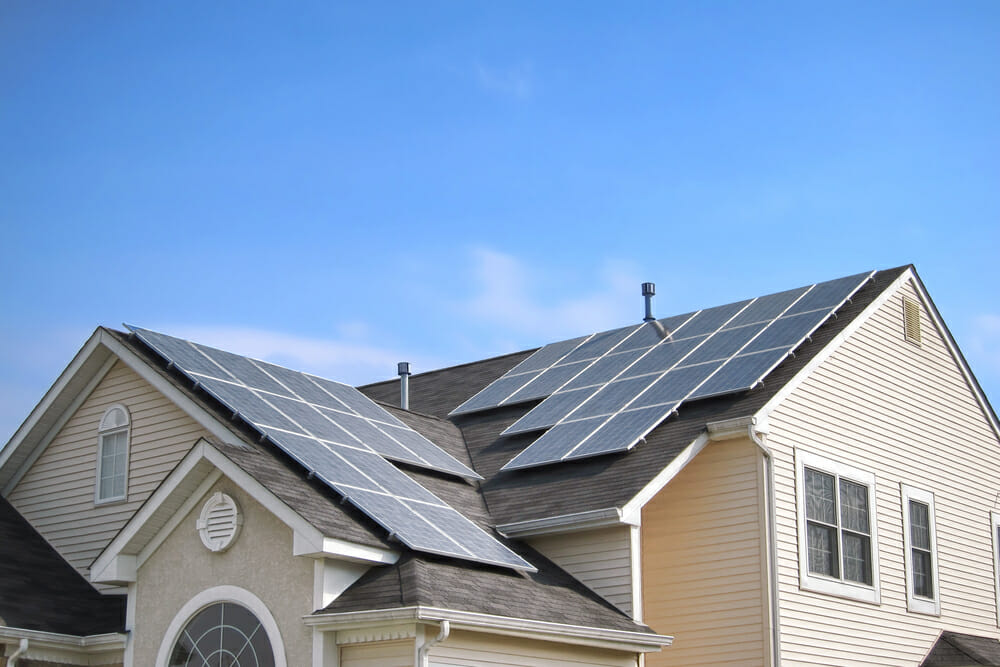Best Solar Panels Things To Know Before You Buy
The 4-Minute Rule for Best Solar Panels
Table of ContentsGetting My Best Solar Panels To WorkSome Known Details About Best Solar Panels Some Of Best Solar PanelsSome Known Facts About Best Solar Panels.How Best Solar Panels can Save You Time, Stress, and Money.The Best Solar Panels PDFs
Secret takeaways There are three different types of photovoltaic panels: monocrystalline, polycrystalline, and thin movie (Best solar panels). Monocrystalline photovoltaic panels are highly effective as well as have a sleek style, however come with a higher cost factor than other photovoltaic panels. Polycrystalline solar panels are cheaper than monocrystalline panels, nevertheless, they are much less effective and also aren't as aesthetically pleasing.
Because polycrystalline cells contain multiple silicon cells, the electrons can not relocate as quickly and because of this, decrease the performance of the panel. The lower efficiency of polycrystalline panels also means they often tend to have a lower power outcome than monocrystalline panels, normally ranging in between 240 watts and 300 watts.
Best Solar Panels Fundamentals Explained
:max_bytes(150000):strip_icc()/6120QNOfBGL._AC_SL1000_1-bf67aebb0ba24b009607cd4e29c871c4.jpg)

The temperature level coefficient tells you just how a lot the power output will certainly lower by for every 1 * C over 25 * C the panel gets. The conventional temperature coefficient for mono and also polycrystalline panels commonly drops someplace between -0.
In truth, with some thin film panels, it's tough to also see the private cells within the panel. They likewise often tend to have much less wiring and busbars, indicating there's less white space. Nevertheless, since they are so ineffective, you would certainly need to cover your entire roof covering in slim film panels - which may or may not be your style.
Best Solar Panels - The Facts
The way monocrystalline solar cells are designed reasons there to be rather a little bit of white space on the panel. Some manufacturers have actually functioned around this with black packaging or forming the cells differently, but these visual changes can impact both the rate and also efficiency of the panels. On the whole, monocrystalline panels still look streamlined, however they're a bit much more noticable than thin film panels.
We do not recommend thin film photovoltaic panels for domestic setups - their performance and toughness do not make the inexpensive worth it, and also it's unlikely you'll have learn this here now nearly adequate area to mount the variety of thin movie panels you would need to cover your household power use. Factors to consider besides photovoltaic panel kind There are two points we right here at Solar, Reviews think are more crucial than solar PV cell kind when picking panels for your residence: the brand of solar panels and also locating the best solar installer (Best solar panels).
A solar panel system will be on your roofing for at least 25 years, so you require an installer you can rely on for two-plus decades!
Best Solar Panels Can Be Fun For Everyone
Given that they are made from pure silicon, they can be easily determined by their dark black shade. Using pure silicon also makes monocrystalline panels one of the most space-efficient as well as longest-lasting amongst all three photovoltaic panel types. This comes at a price a great deal of silicon is lost to generate one monocrystalline cell, in some cases reaching over 50%.
Polycrystalline solar panels As the name suggests, these come from different silicon crystals instead of one. The silicon fragments are melted as well as put right into a square mold. This makes polycrystalline cells a lot more inexpensive since there is minimal wastefulness, as well as provides them that characteristic square form. Nonetheless, this additionally makes them less efficient in terms of power conversion and also area, considering that their Check This Out silicon purity as well as building are reduced than monocrystalline panels.
Each panel does not need a frame backing, making them lighter and also simpler to set up. Unlike crystalline silicon panels that are available in standardized sizes of 60, 72, and also 96-cell counts, thin-film panels can can be found in different dimensions to suit specific demands. However, they are much less efficient than regular silicon solar panels.
How Best Solar Panels can Save You Time, Stress, and Money.
Unlike mono-and polycrystalline solar cells, the silicon is not structured on the molecular degree. This is why a-Si panels are fit for applications that call for very little power, such as pocket calculators.
The mix of these aspects causes the highest possible effectiveness among thin-panel types, though still not as reliable as crystalline silicon panels. Monocrystalline panels have an efficiency score over 20%. PERC panels include an extra 5% efficiency thanks to their passivation layer. Polycrystalline panels hover somewhere between 15-17%. CIGS panels have an effectiveness array you can check here of 13-15%.
$0. 32-$0. 65 $1 $1. 50 $0. 70 $1 $0. 60 $0. 70 $0. 50 $0. Best solar panels. 60 $0. 43 $0. 50 Note that these figures don't include the expense of setup as well as labor. With labor as well as other overhead factors, the total amount can rise to $2. 50 to $3. 50 per watt.
The Ultimate Guide To Best Solar Panels
Monocrystalline and also polycrystalline panels have a temperature coefficient in between -0. 5%/ C, while thin-film panels are closer to -0.